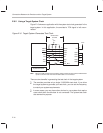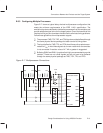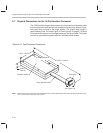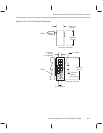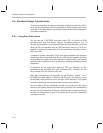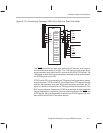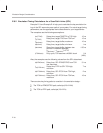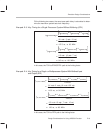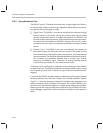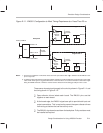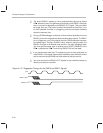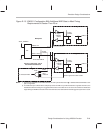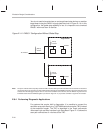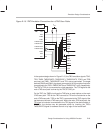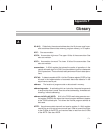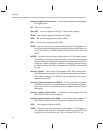
Emulation Design Considerations
E-20
E.8.3 Using Emulation Pins
The EMU0/1 pins of TI devices are bidirectional, 3-state output pins. When in
an inactive state, these pins are at high impedance. When the pins are active,
they provide one of two types of output:
Signal Event. The EMU0/1 pins can be configured via software to signal
internal events. In this mode, driving one of these pins low can cause
devices to signal such events. To enable this operation, the EMU0/1 pins
function as open-collector sources. External devices such as logic analyz-
ers can also be connected to the EMU0/1 signals in this manner. If such
an external source is used, it must also be connected via an open-collector
source.
External Count. The EMU0/1 pins can be configured via software as
totem-pole outputs for driving an external counter. If the output of more
than one device is configured for totem-pole operation, then these devices
can be damaged. The emulation software detects and prevents this condi-
tion. However, the emulation software has no control over external
sources on the EMU0/1 signal. Therefore, all external sources must be
inactive when any device is in the external count mode.
TI devices can be configured by software to halt processing if their EMU0/1
pins are driven low. This feature combined with the signal event output, allows
one TI device to halt all other TI devices on a given event for system-level de-
bugging.
If you route the EMU0/1 signals between multiple boards, they require special
handling because they are more complex than normal emulation signals.
Figure E–11 shows an example configuration that allows any processor in the
system to stop any other processor in the system. Do not tie the EMU0/1 pins
of more than 16 processors together in a single group without using buffers.
Buffers provide the crisp signals that are required during a RUNB (run bench-
mark) debugger command or when the external analysis counter feature is
used.



